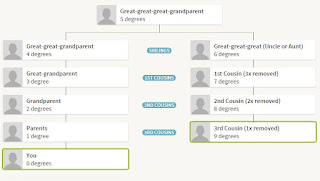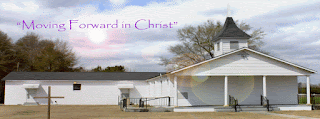As usual, there is more to the story of the Yonge family than meets the eye. I started the blog with
David Yonge's happy ending, with his wife and children as
free persons of color. There was a beginning too, with a parent and sibling in slavery.
I looked into the background of
William Simmons of
St. Paul's Parish, Colleton County, SC. He owned David's wife
Judy Yonge and the kids. There were 100 enslaved people (no breakdowns) at his plantation in St. Paul's Parish during the 1810 census. William and his family actually lived in Charleston, SC. I thought I was going down her path at the time. Instead, it lead me right back to David.
On
March 3, 1801 William Simmons married
Sarah Yonge. Sarah was the daughter of
Francis Yonge Jr and
Sarah Wilkinson. Some of you may remember the blog post about my
African-American Wilkinson relatives and the
Great Migration. Everything is connected somehow.
Francis Yonge Jr. (1755-1789) owned
Toogoodoo Plantation in St. Paul's Parish. He left a will in which David was mentioned as an enslaved person (not a child). I do not have an exact date of birth for David, so I can only estimate that David is a teenager in 1789. Yellow Judy and her children are mentioned as well. Was she my Judy? I don't think so. I do not know if Judy was part of a
Deed of Gift from Sarah Wilkinson-Yonge to William Simmons. William's plantation was too large to trace.
Francis was the son of Francis Yonge Sr. (1730-1780) and his first wife Sarah Clifford. After Sarah died, Francis married Susannah Peckham Johnson. In his October 23, 1780 will, Francis left seven enslaved people including Joe, Tissey, Mary, Satira, Pitty, girl Judy and boy Anthony to Susannah. He left a girl Rachel to his daughter Sarah Samuels. This girl Judy might be my 3x great-grandmother but there isn't enough information to confirm that yet.
On January 10, 1781 Francis Jr took an inventory of his father's estate. There were more enslaved persons than what was recorded on the will. It also included relationships and children. On the 2nd page, I made another discovery! (No those are NOT my fingers!)
Circled in red are my 4x great-grandmother
Flora and her two children
Cain and
David! Based upon this inventory, I can assume that Cain and David are between 5 and 10 years old. Flora and her 2 children were valued at
125 British Pounds (
$284.33 in US dollars).
Whatever became of Cain? Unfortunately Cain did not get the opportunity to free himself like his brother David. Cain never lived long enough to enjoy freedom granted by the Emancipation Proclamation. I did find Cain's wife
Sylvia and son
Cain Young Jr. They lived in
Christ Church Parish, Charleston during the 1870 census. Cain Jr was married to
Clarinda Murrell and had at least one child named
Sanders Young. Sylvia was born in Africa.
Flora was a very resilient woman. She was born on Yonge's Island, South Carolina at Francis Yonge Sr.'s plantation. I estimate around 1750. From the
SC Archives, I discovered a Deed of Gift dated February 19, 1752 from Francis to his sister
Lydia Fuller with her name, her mother
Daphne and brother
Stepney.
Stepney and wife
Phyllis (circled in
blue) were also mentioned in the 1781 inventory of Francis Yonge Sr. Stepney and Phyllis were valued at
100 British Pounds (
$227.47 in US dollars). I didn't find much about him or his family after Francis' death. Flora returned to the Fuller family as a house servant.
In 1870, I found Flora in Precinct 13,
Brazoria County, Texas with her great-grandson
Jacob Young.
Jacob b. 1840 was the son of
Gabriel and
Hannah Young. The census reported that Flora was 100 years old. I now know she was about 120 years old. Jacob was recorded in the September 3, 1867
Orange County, Texas voter registration list. The list indicated that he lived in Texas for 12 months. Therefore, Jacob, his wife
Jennie, son
Gabriel and great-grandmother Flora traveled by wagon to Texas after the Civil War. I can only imagine how tough that trip was on their family especially on an elderly woman. She was a survivor. I hope her final days were comfortable based on what happened to her.
Lastly, who were my 5x great-grandparents? I mentioned Flora's mom Daphne briefly.
Daphne and her husband
Pompey were probably the original Africans that were brought into the United States from Angola. I would estimate they were born between 1715 to 1725. They were enslaved to
Christopher Wilkinson (1667-1733) of St. Paul's Parish of Colleton County. Christopher arrived in the US around 1710-1711 and relocated to SC in the 1720s. The Wilkinsons were first neighbors and friends of the Yonge family. As I stated in the beginning of this story, Christopher's granddaughter Sarah Wilkinson married Francis Yonge Jr. in 1766. When Christopher died in 1733,
Robert Yonge (father of Francis Yonge Sr.) was one of three men ordered by the Governor to divide his estate. The estate remained in dispute for years among his children. On March 6, 1745 Daphne and Pompey were among 19 Negroes mentioned in a lottery between the siblings
Edward and
Elizabeth Wilkinson.
Daphne would later be purchased by Francis Yonge Sr. but would reunite with Pompey in the February 3, 1762 estate inventory of
Francis Wilkinson (another son of Christopher). Francis Yonge Sr was a witness who helped document the estate.
Documenting the Young branch of family has been one of the most challenging of my research. I have often went down the wrong path. It has taken me years to get to this point. I have had various pieces of the puzzle over time but could never make them fit until now. I am proud that I can follow the paper trail of my Young family for 300 years (1715-2015) even with the added challenge of slavery.
But Wait...
THERE'S MORE!
Part III The great DNA revelation!

















































